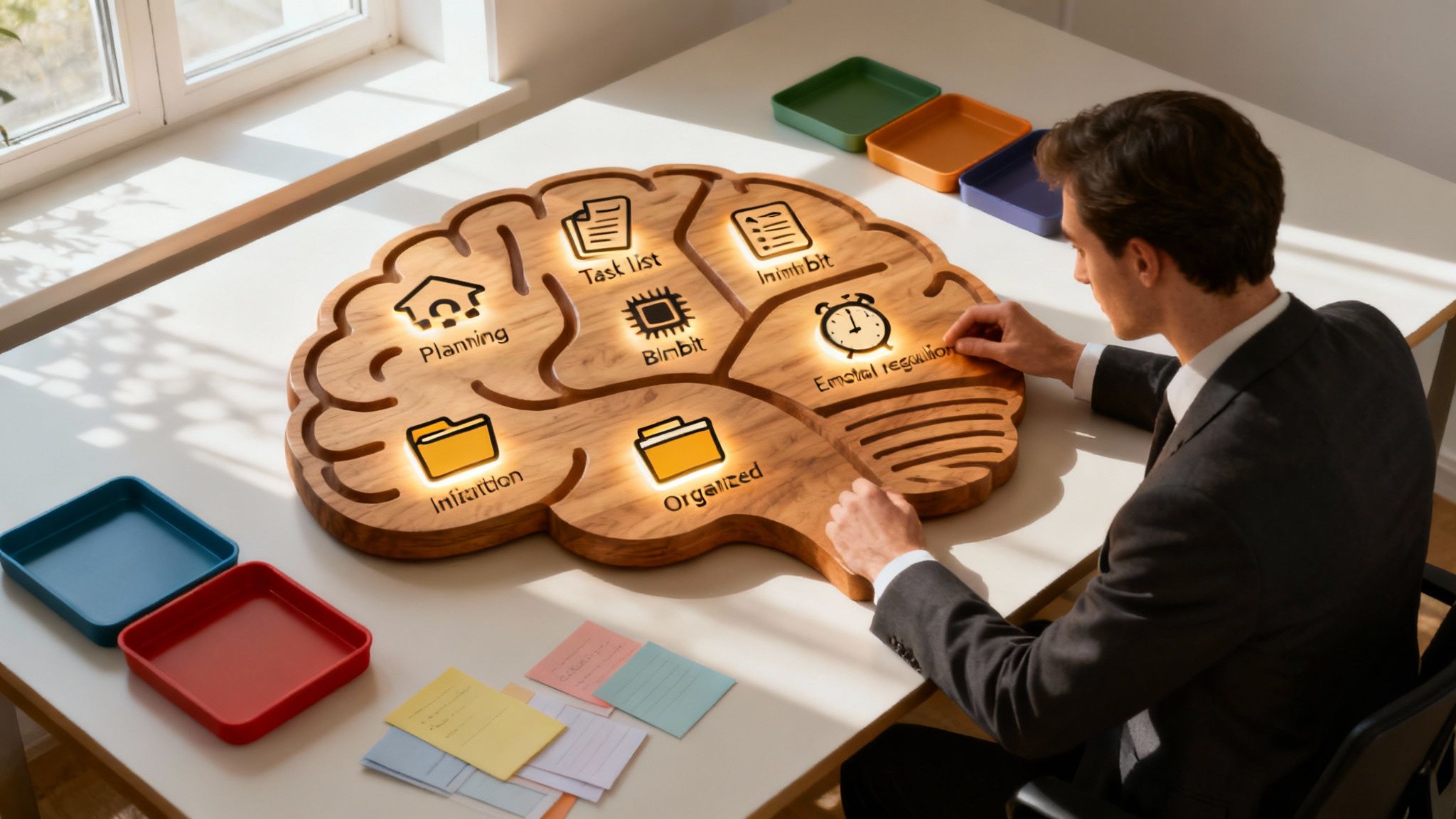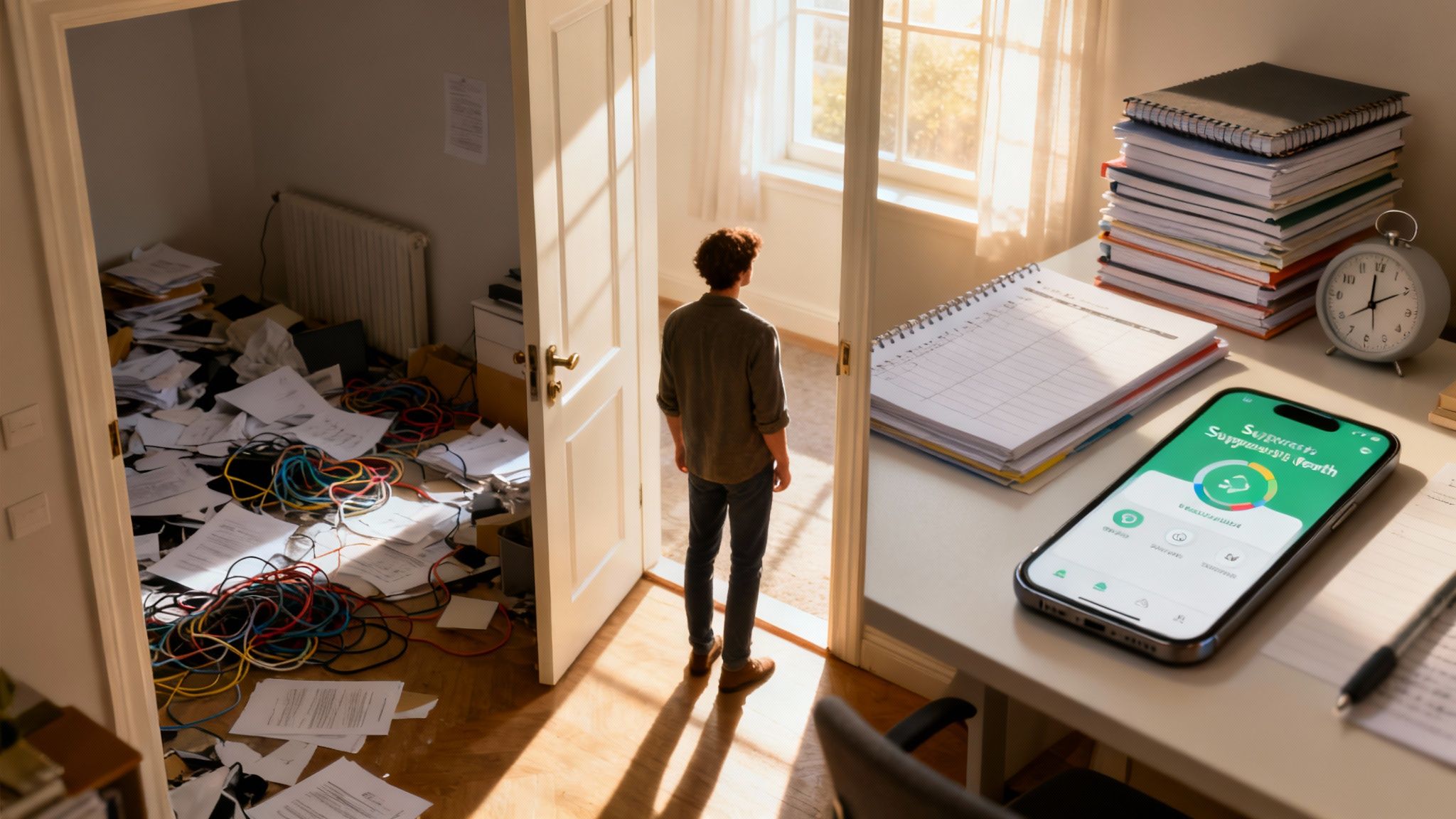Some ADHD symptoms can interfere with academics, occasionally leading it to be mislabeled as a learning disability. However, their differences lie outside the classroom, where ADHDers face non-academic challenges, like emotional regulation, relationship issues, and behavioral problems.
To better understand ADHD and learning disabilities, let’s look into the definitions, traits, and treatment methods for these conditions.
Too long; didn’t read
- ADHD symptoms, like inattention and hyperactivity, can lead to academic challenges.
- ADHD is not a learning disability.
- Someone with ADHD can also have a learning disability, but not all people with ADHD have LDs.
What is ADHD?
ADHD is a neurodevelopmental condition that causes inattention, impulsivity, and hyperactivity.
ADHD has three subtypes:
- ADHD-HI (predominantly hyperactive-impulsive): This is the least common type of ADHD. Symptoms include impulsive and hyperactive symptoms without inattentiveness.
- ADHD-PI (predominantly inattentive): Symptoms include inattentiveness without hyperactivity.
- ADHD-C (combined type): This is the most common form of ADHD. Symptoms include a mix of the symptoms presented in ADHD-HI and ADHD-PI.
How can ADHD affect school performance?
1. Inattention
- Difficulties following directions
- Rushing through tasks without paying attention to detail
- Zoning out during instructions
2. Hyperactivity
- Unable to sit for long periods
- Struggles to keep quiet in class
- Needs to fidget with or chew on objects
3. Disorganization
- Challenges with studying and organizing information
- Difficulties prioritizing classwork
- Unable to keep track of assignments
4. Impulsivity
- Difficulty waiting their turn
- Engages in impulsive behaviors, like getting into a fight
- Talks when others are talking
5. Limited executive functioning capacity
- Difficulties with starting assignments and meeting deadlines
- Unable to self-motivate to study or complete assignments
- Unable to recall what was just said by a teacher or classmate
What are learning disabilities?
Learning disabilities (LD) affect “the ability to understand spoken or written language, do math calculations, coordination, or attention.”
Each year, 7.2 million (or 15%) students in public school systems receive special education services. The impact of a learning disability varies, with different levels of required assistance to manage their condition.
The seven most common learning disabilities
1. Auditory processing disorder (APD)
People with APD have difficulties processing sounds and may place them out of order.1
For example, they may have trouble filtering out the sound of rustling leaves during a conversation.
2. Dyslexia
People with dyslexia face struggles when reading text.
They may need help recognizing the relationship between sounds, letters, and words.
3. Dysgraphia
Dysgraphia affects a person’s writing abilities.
They may have challenges with handwriting, spelling, and compiling their thoughts onto paper.2
4. Dyscalculia
People with dyscalculia have difficulties with mathematical calculations.
They need assistance interpreting and performing number-related concepts.3
5. Language processing disorder (LPD)
This learning disability leads to written and verbal challenges.
People with LPD face difficulties with understanding and processing the information they hear.4
6. Nonverbal learning disorder (NVLD)
Struggles with visual-spatial processing characterize nonverbal learning disorder.
People can have trouble comprehending nonverbal cues and behaviors.5
7. Visual perceptual/visual motor deficit:
People with perceptual/visual motor deficit learning disabilities have problems with their hand-eye coordination.
For example, they may lose their place when reading or need help with using items like pencils and crayons.5
How can learning disabilities affect academic performance?
People with learning disabilities may face issues that reach beyond the classroom setting.
Additional challenges can include:
- Struggle interpreting letters, numbers, and sounds
- Disorganization
- Difficulty following instructions
- Weakened hand-eye coordination
- Shorter attention span
- Difficulties with memory
How are learning disabilities diagnosed?
A parent or schoolteacher may notice learning difficulties at home or in school. However, most learning disabilities are diagnosed with physical and mental examinations facilitated by medical professionals or school faculty.
There are several methods used for diagnosis:
- A medical exam
- Review of academic, social, and developmental performances
- Review of family history
- Academic and psychological tests
They might have learning difficulties if test scores fall below a certain level.
How to manage ADHD and learning disabilities
Some routine treatment methods include:
- Prescription medications
- Cognitive behavioral therapy (CBT)
- Extra assistance (tutors, speech pathologists, etc.)
- Special education, or individualized education programs (IEP)
- Accommodations for school

.png)







